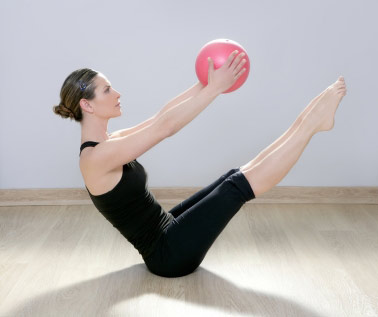Core Exercises For Preventing Lower Back Problems
Excess outdoor activities may result in deconditioning of the back muscles causing the sufferer to become more prone to minor back injuries. The best way to prevent such injuries to the spine is to do core exercises for preventing lower back problems through regular abdominal conditioning exercises. Those who feel comfortable while sitting can opt for back extension exercise. If you find that back soreness is reduced while standing, try flexion exercises such as the pelvic tilt. Using an Abdometer will help in monitoring the natural curvature of the lower spine, which is important during exercises.
This video outlines how to get rid of pain in the lower back by strengthening your core with exercises such as rag doll stretches, forward bends and abdominal crunches. Get expert advice from professional trainer Carol Ann of CyberWorkouts.com
Core Exercises For Preventing Lower Back Soreness
Exercises for lower back soreness can strengthen back, stomach, and leg muscles. They help support your spine, relieving pain.
DURING the dog days of summer, the rush to cram in a few more outdoor activities often takes precedence over structured fitness routines.
Many indulge in this reprieve, reaping the benefits of healthy bodies cultivated throughout winter and spring.
One risk of this enticing exercise downtime, however, is that core and back muscles quickly become deconditioned, greatly increasing the potential for minor back injuries.
These injuries can happen in the wake of gallant attempts to move a canoe without assistance or lift a beverage cooler that is a little too full of ice.
To best avoid these injuries, practise consistent, year-round abdominal conditioning focused on maintaining whole-core strength, including the hard to reach lower core.
In case it’s too late for preventative measures, here are some exercises to help soothe an irritated back. First, determine whether your back pain is lessened when you sit down or when you stand and walk.
If sitting feels best, you will most likely benefit from extension exercises.
To perform a back extension, begin by lying face down with your hands at your side. Next, slowly raise your shoulders while contracting your lower back muscles.
Hold the position for one second before lowering the shoulders and relaxing the back, keeping your neck straight and lower body relaxed.
If standing relieves your pain, then flexion exercises might be more helpful.
One effective flexion exercise is the pelvic tilt. To start, lie flat on your back with bent knees and both feet flat on the ground.
Next, contract your lower abdominal muscles to gently tilt your upper pelvis toward the floor. Hold for five seconds, maintaining contact between the ground and your lower back.
It is also effective to roll a small towel and place it between your lower back and the floor while you perform this exercise. This helps to maintain neutral spine posture.
For a more precise measurement of this exercise, you can use a core training device called the Abdometer, which uses an adjustable air pouch and a digital monitoring system to maintain the natural curvature of the lower spine during abdominal exercises.
Core exercises for preventing lower back problems are helpful to keep the abdominal muscles strong and relaxed, which reduces the chance of minor back injury. When starting a core strength exercise routine it is important to assess whether you feel comfortable while sitting, standing, or walking. You have no excuse for not doing exercises. Keep to those exercises with which you are compatible. Consult a physiotherapist or a physical instructor to know which exercises to do and how to do them so that you are able to reap the full benefit, and keep your back strong.
Core stability exercise can be used to strengthen or possibly correct lower back pain. Strengthen your lower back with tips from personal trainer Lisa Gaylord from LisaGaylord.com
In this video, Dr. Tyler Burbank of Taylor Ranch Injury & Trauma Clinic explains and demonstrates lower back core exercises.
You might also like:
Tags: Back exercises, Core Exercises For Preventing Lower Back Problems















